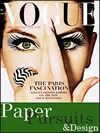Harry Winston (March 1, 1896 – December 8, 1978) was an American jeweller. He donated the Hope Diamond to the Smithsonian Institution in 1958 after owning it for a decade. He once sent a 726 carat (145 g) rough diamond, "The Jonker", through the US Postal Service, foregoing other more conventional means of secure transfer.
Harry Winston's jewelry empire began with his acquisition of Arabella Huntington's famous jewelry collection.. The wife of railroad magnate Henry Huntington, Arabella amassed one of the world's most prestigious collections of jewelry, largely from Parisian jewelers such as Cartier.
When Harry Winston purchased the collection after her death, the designs of the collection were quite old fashioned. Harry Winston redesigned the jewelry into more contemporary styles and showcased his unique skill at jewelry crafting. According to the Huntington museum: "He frequently boasted that Arabella’s famous necklace of pearls now adorned the necks of at least two dozen women around the world."
One famous quote of his is, "People will stare. Make it worth their while."
http://www.harrywinston.com/
More beautiful vintage Harry Winston ads can be viewed here:
http://paperpursuits.com/advault/adcompanies.cfm?Company=Harry%20Winston
Harry Winston's jewelry empire began with his acquisition of Arabella Huntington's famous jewelry collection.. The wife of railroad magnate Henry Huntington, Arabella amassed one of the world's most prestigious collections of jewelry, largely from Parisian jewelers such as Cartier.
When Harry Winston purchased the collection after her death, the designs of the collection were quite old fashioned. Harry Winston redesigned the jewelry into more contemporary styles and showcased his unique skill at jewelry crafting. According to the Huntington museum: "He frequently boasted that Arabella’s famous necklace of pearls now adorned the necks of at least two dozen women around the world."
One famous quote of his is, "People will stare. Make it worth their while."
http://www.harrywinston.com/
More beautiful vintage Harry Winston ads can be viewed here:
http://paperpursuits.com/advault/adcompanies.cfm?Company=Harry%20Winston
1970

1948 

1976












